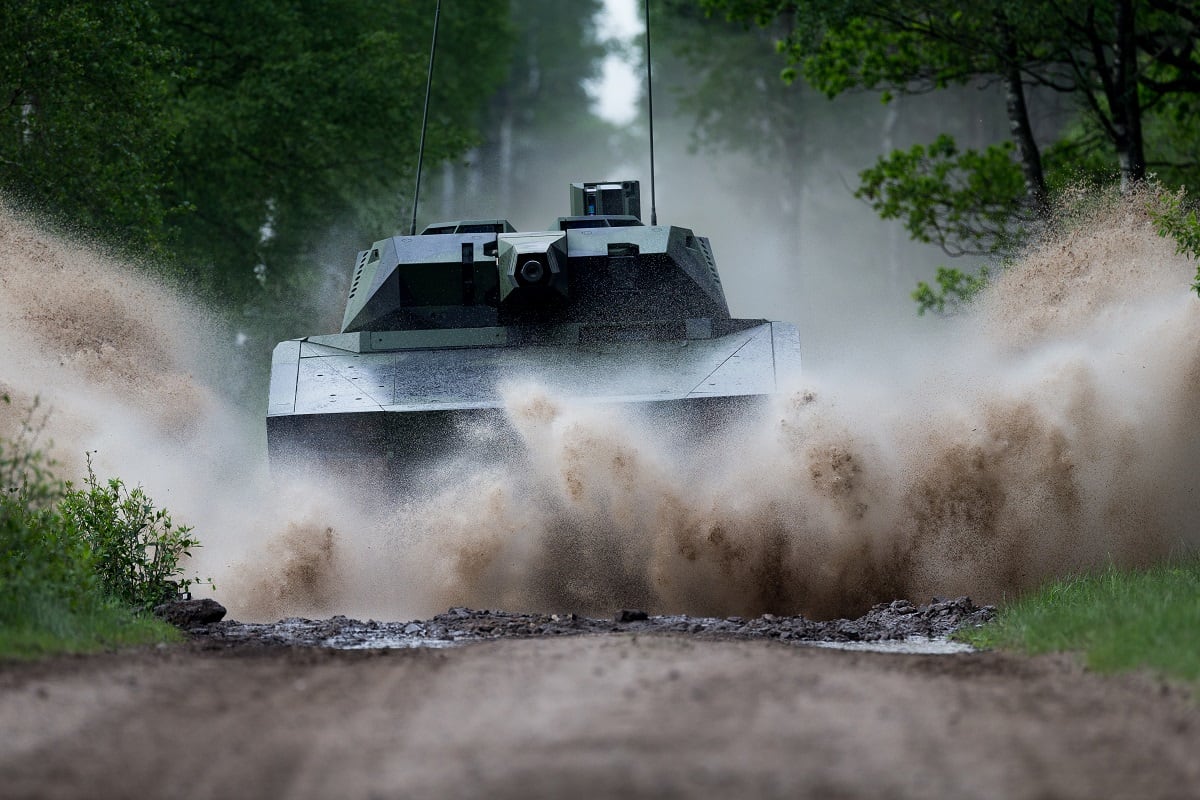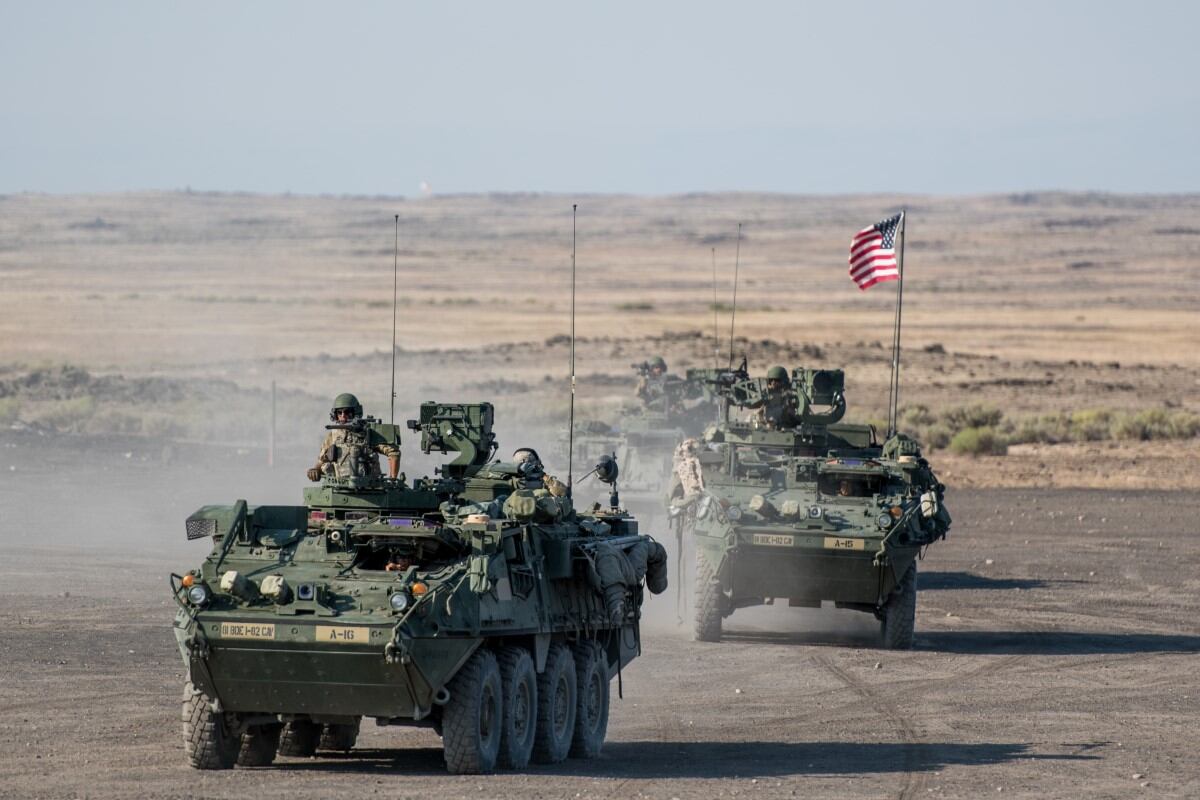WASHINGTON — History has informed international defense companies that it’s difficult to play ball in the United States, but as the U.S. Army looks to rapidly modernize, both American and international companies are finding that partnering to bring readily available advanced technology and weapon systems into the U.S. is a win-win for both sides.
The formation of these partnerships appear to be in the midst of a boom in recent months following the advent of the Army Futures Command which is taking on the service’s most pressing modernization priorities: Long-Range Precision Fires, Next-Generation Combat Vehicle, Future Vertical Lift, the network, air and missile defense, and soldier lethality.
The service wants to wrap up a dramatic round of modernization efforts by 2028 and has developed aggressive prototyping schedules for critical weapon systems that would have normally taken 10 to 20 years to develop and field.
While there are certain areas the Army will likely close off to international companies, such as sites, radars and gun systems, there are plenty of areas where the international defense industry can quickly boost the service’s capability.
U.S. companies are seeing this potential from competitors and counterparts abroad.
New overseas bonds
American company Raytheon and German firm Rheinmetall recently announced a partnership to introduce the latter’s new next-generation fighting vehicle — its Lynx 41 — as an offering in the Army’s NGCV Optionally Manned Fighting Vehicle (OMFV) program, intended to replace the Bradley Fighting Vehicle.
RELATED

It is anticipated that the Army will release a request for proposals by the end of the year, with proposals due in May 2019. Then the Army will downselect to two competitors, who will build 14 prototypes in an engineering and manufacturing development phase in the first quarter of fiscal 2020. Previously the Army aimed for a few prototypes by FY22.
Rheinmetall built its system with a high level of modularity, leaving room for Raytheon to integrate systems it knows the Army wants in a future vehicle such as its Third Generation FLIR, that is also going on Abrams tanks.
And the turret is capable of accommodating a wide variety of gun systems that the Army might prefer.
At the same time, American firm SAIC is partnering with Singapore’s ST Engineering and Belgium’s CMI Defence to competitively prototype a mobile protected firepower capability — a light tank for the U.S. Army’s infantry force — and the companies foresee continued development of that work as the service develops its requirements for an OMFV prototype.
RELATED

The Army is expected to choose two companies among British company BAE Systems, American manufacturer General Dynamics Land Systems and the SAIC team; those two choices will go on to competitively build 12 prototypes by the end of November. At the end of the competitive prototyping phase, a winner will be selected to move forward into production.
Moreover, big players in the combat vehicle industry such as General Dynamics and BAE Systems pitched European systems as possible jumping off points for an OMFV at the Association of the U.S. Army’s annual conference earlier this month.
General Dynamics turned heads at the show with a Griffin III technology demonstrator from its European Land Systems business equipped with a punishing 50mm cannon.

BAE Systems brought its Combat Vehicle 90 — built for the Swedish army — to the show and did not display an American system such as a Bradley or an Armored Multi-Purpose Vehicle.
According to Jim Miller, a BAE business development director, bringing the CV90 from Europe for the first time to an American trade show was a way of showing the Army that what it has developed for other countries could serve as a starting point to build an OMFV vehicle. Its modularity would also allow for the integration of whatever the Army would like to include in a new fighting vehicle, he said.

Likely unintentionally throwing AUSA attendees off its scent by bringing a howitzer instead of a vehicle, South Korean defense firm Hanwha Corporation expressed interest in partnering with a U.S. company to offer a more advanced and more heavily armored version of its K21 vehicle, which is entering service with the Korean Army, as a possible candidate for the U.S. Army’s OMFV prototyping effort, according to Jim Tinsley, an analyst at Avascent, who spoke to Defense News in an interview.
There are rumors that Hanwha’s U.S. partner could be Textron.
Gaining momentum
Success stories of partnering with overseas industry are already gaining momentum in a variety of programs in recent years, both within the Army and within other services.
The Marine Corps recently chose BAE Systems and Italian company Iveco Defence Vehicles to build its amphibious combat vehicle.
To move quickly on interim active protection systems for its combat vehicles, the Army chose Israeli company Rafael and DRS to supply the former’s APS system Trophy on Abrams tanks. DRS is based in Virginia, but its parent company, Leonardo, is Italian.
Another Israeli company is in the running to supply the Bradley with its Iron Fist APS system with General Dynamics Ordnance and Tactical Systems as its partner in the U.S.
And to get into the Army’s APS game, Rheinmetall has partnered with Unified Business Technologies, a small, Michigan-based company that would build an active defense system stateside and also change its name to StrikeShield.
Rheinmetall and UBT will demonstrate the active defense system’s capability later this year in hopes it will be considered as an interim solution for the Stryker combat vehicle or another system in the near future.
RELATED

The Army has also chosen Leonardo DRS to build its interim Short-Range Air Defense System, with General Dynamics performing the integration work onto a Stryker platform. A Boeing and GDLS team lost that competition.
Across the other services, Leonardo recently won the Huey helicopter replacement program with the U.S. Air Force by partnering with Boeing; and Saab, also partnering with Boeing, recently won the Air Force’s competition to build a new T-X trainer aircraft.

And another possible competitive procurement effort to replace the gun and turret on the Stryker could have an international flavor with participants like Norway’s Kongsberg and CMI.
“It’s these big partnership plays that are sort of changing the market, there’s a certain maturity in the approach,” Avascent’s Tinsley said.
The climate is right
In addition to the partnerships providing a way for international companies to find business in the U.S. where previously it was more difficult, U.S. prime contractors are also seeing a benefit.
“Contractors themselves recognize that there are gaps in their portfolios, and rather than spending a lot of their own money on it in a time when maybe the probability of [moving forward] or probability of cancellation or whatever else could be higher and there’s uncertainty in the market,” Tinsley said, “I think it makes financial sense for the U.S. contractors to go and find technology and bring it to the table rather than trying to snuff it out, and that’s just a big change in attitude toward foreign technology.”
Yet these partnerships raise the question of U.S. production versus building systems abroad.
So far, it appears many of the international firms looking to provide systems to the U.S. acknowledge the desire for U.S. production.
“Potential entrants are starting to do the right thing,” Tinsley said. “It’s not always easy. You have government restriction on what technology you can transfer, where production should be, your home government trying to get a good deal. But we are seeing those choices made to say: ‘It’s worth having a play in the world’s largest defense market, and we will make that happen because it will validate our solution for the global market as well and that will provide strong opportunities for us.’ ”
The boom in U.S. and international partnerships is happening as the Trump administration focuses on “America First” economic policies.
“It’s interesting whether the Trump administration even realizes what is happening or has put its arms around how immediate increases in defense spending have created an entry point for international players in the U.S. market,” Tinsley noted.

While the increase in partnerships are on the rise, Tinsley said, there are areas of weapon system development and procurement in which the Army will likely be less inclined to let international companies participate (such as in Long Range Precision Fires and Future Vertical Lift efforts).
“Some choices are locked into being distinctive U.S. capabilities and U.S. advantages that you do not want to export and you do not want parity with overseas,” he said.
But, he added, “I can buy a vehicle and chassis and turret overseas, but with my gun and my FLIR it’s going to be better than any vehicle in the world.”
Jen Judson is an award-winning journalist covering land warfare for Defense News. She has also worked for Politico and Inside Defense. She holds a Master of Science degree in journalism from Boston University and a Bachelor of Arts degree from Kenyon College.







